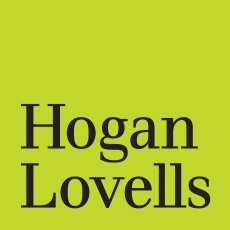Perhaps surprisingly, only a small number of landlords grant the majority of “investment grade” commercial leases. BPF analysis of IPD data suggests that there are approximately 11,000 commercial/investment leases granted every year in England and Wales and that just 15 landlords grant about 70% of those1 . This is good news for a major new initiative: the Model Commercial Lease (MCL). Dion Panambalana explains the principles behind the new initiative.
Back in 2011 the BPF commercial committee decided that it was time to review the commercial leasing process in England and Wales. Many major landlords produce fairer terms as a first draft than they did 25 years ago. However, a lack of standardisation both in lease structure and content contributes to commercial leasing being slower and more costly than it needs to be.
A working group of real estate lawyers and landlord representatives was set up to find a solution. Their remit was to produce a standard starting point that most, if not all, major landlords could adapt to their offer and which most fair-minded tenants could work with. At the same time, there was an opportunity to modernise the wording and style.
In order to achieve this aim, the working group consulted informally with most of the major real estate law firms, and consulted more formally with a number of BPF members.
The MCL comprises a family of templates for commercial leases and associated documents. The documents will be freely available for anyone – landlords or tenants – to download from a public website www.modelcommerciallease.co.uk (expected to be available from the second week in July), without charge, and to customise to their particular requirements.
Different versions of MCL leases will be available to suit different types of commercial buildings, such as offices, shops, shopping centre units and industrial/ logistics units. Bolt-on provisions, such as an offer-back and turnover rent clause, will also be available. The asset management documents include a rent deposit deed and typical licences. A list of the documents contained in the MCL suite of documents is set out at the end of this article.
The MCL is intended to avoid much of the unnecessary negotiation on most routine letting transactions by representing a fair starting (and, in many cases, end) point for both parties. Furthermore, the MCL is largely compliant with the requirements of the Code for Leasing Business Premises (2007).
The legal profession tried a “standard lease” before (in the 1990s) and then there was little industry and professional support for such a project. Will it work now? If now is the time for a more consistent approach to the routine parts of the leasing process, then yes it could as:
- the initiative on this occasion came from the property industry, not from lawyers (albeit most transactional lawyers welcome it);
- after decades of negotiating the same points, mostly to reach the same end, lawyers themselves feel that life is too short to argue points that have little or no practical benefit;
- you don’t need to use the lease unamended. You can customise it to the property and to the deal; and
- perhaps most importantly, the landlord and tenant relationship is now less confrontational than in the past, and many experienced counterparties do not relish unnecessary conflict.
The MCL should, in time, also speed up (and lower the cost of) investment and financing transactions. Lawyers and their clients will be familiar with MCL documents, making it simpler to identify the issues that need to be reported upon to buyers and funders.
The working group intends to keep the MCL under review to ensure that it remains up to date. Successive versions of every document – the current version and all previous versions – will be available for everyone to view and download free of charge on the MCL website.
Transition will take some time. For an existing controlled environment, such as a shopping centre, with multiple, possibly hundreds, of leases, it could take years. But new projects could use the MCL immediately. Similarly, many other properties can, with care, use the MCL in new lettings.
Standardisation of the parts of the lease which lend themselves well to a consistent approach will take a while and only work if transaction teams want it. So a big launch is not in the offing. Nor is a call for universal adoption. Time is not of the essence on this one.
Documents in the MCL suite of documents
Leases
- Office – whole and part;
- Office on a business park – whole and part
- Retail premises – whole and part
- Retail premises on a retail park – whole and part
- Shopping centre unit (with optional turnover rentvariant)
- Industrial/logistics unit – whole
- Unit on an industrial park – whole
Additional bolt-on clauses
- Turnover rent clause (for use with retail leases)
- Offer-back clause (for use with any lease)
- A3 / A4 / A5 use clauses (for use with retail leases)
- Index-linked rent review clause (for use with any lease)
- Option to renew clause (for use with any lease)
- Service charge cap clause (for use with any lease)
Asset management documents
- Rent deposit deed
- Licences to assign, underlet, change use and alter
- Licences allowing undertenant to assign, underlet, change use and alter Documents in the MCL suite of documents



